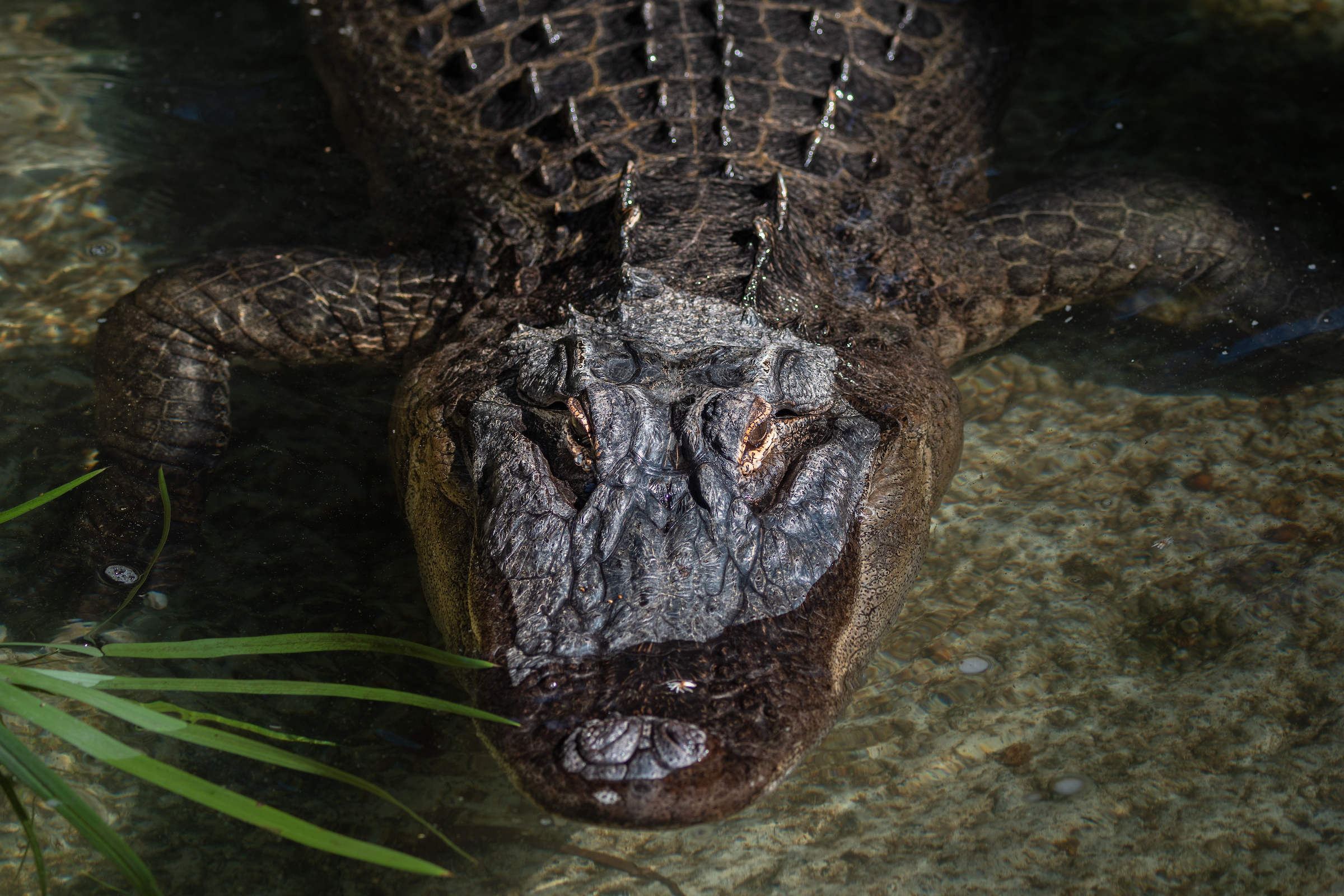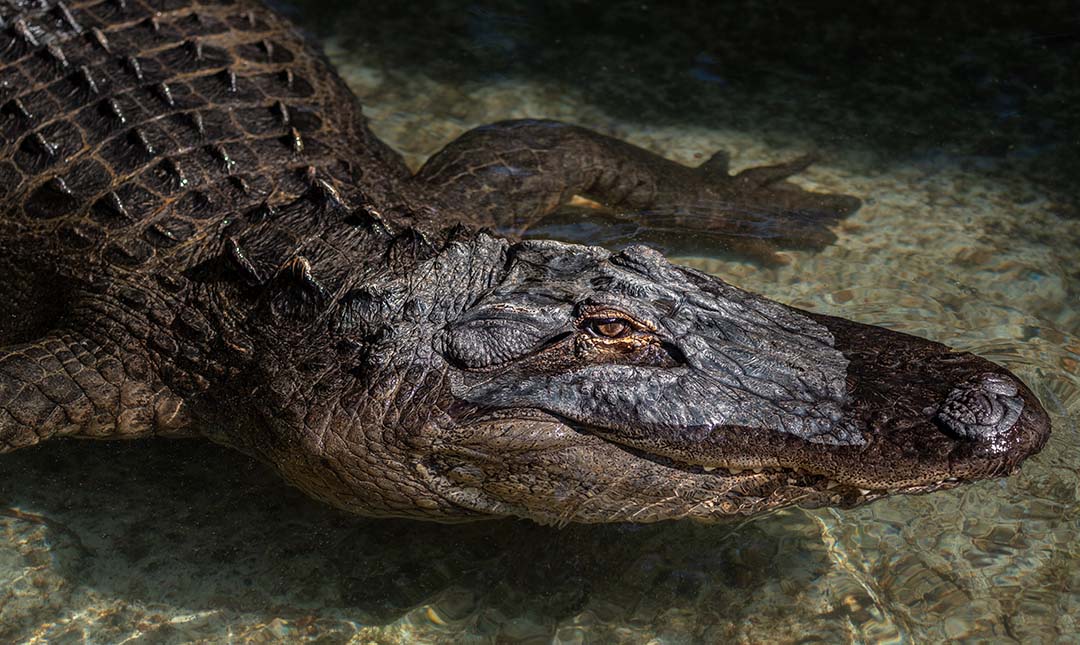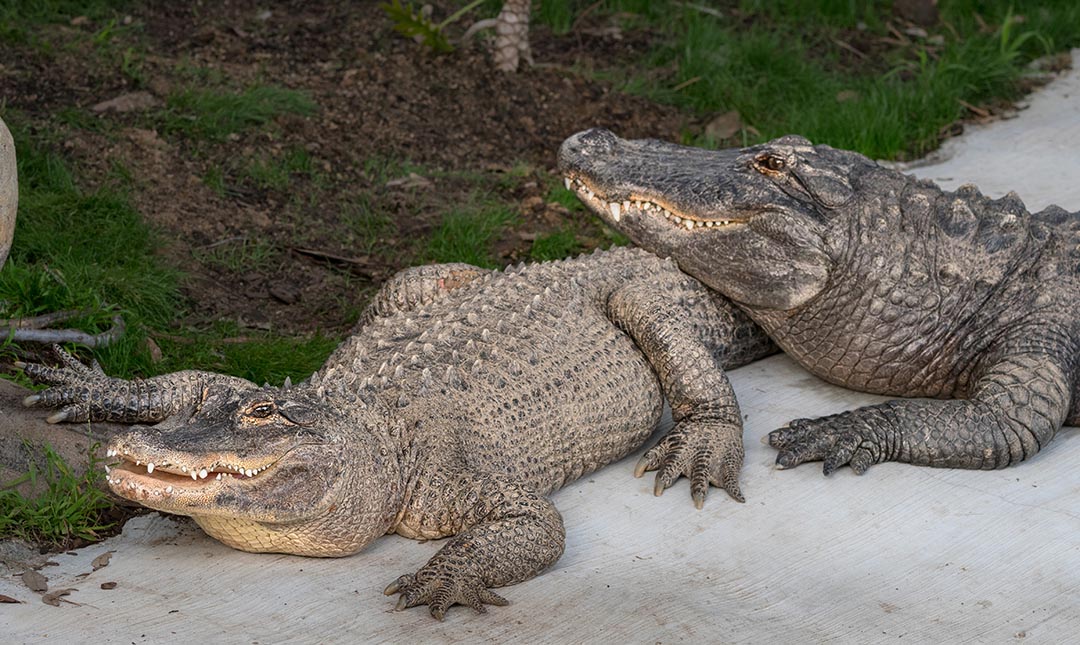About
Early in the day, American alligators often bask on the shoreline to raise their body temperature. However, they spend most of their time in the water and are well adapted to an aquatic lifestyle. Eyes, ears, and nostrils are located on top of the head, so they can see, hear, and breathe while almost totally submerged in the water. Powerful tails propel them and serve as rudders; they can remain underwater for up to two hours. As ambush predators, they drift slowly until they are within striking range of their quarry at the water’s edge. Small black pits on the scales around their jaws are dermal pressure receptors that help them detect splashes and movement in the water. Alligators grab prey with conical teeth, then drag it underwater to drown. A spinning maneuver called a “death roll” is sometimes used to subdue and dismember larger prey.
Alligators’ mouths contain as many as 80 teeth at one time. Lost teeth are quickly replaced, and they can go through 3,000 teeth in their lifetime. During cold winter months, alligators become dormant. They retreat into underwater “gator holes” they have excavated. Large alligators can survive for months without food.
Female alligators lay their eggs on land in a mounded nest made from mud and plant matter. Heat from the decomposing vegetation helps incubate the eggs, which hatch in 70 to 90 days. Hatchlings are about eight inches long and will grow one foot per year for the first six years. The mother will protect her young from danger for up to three years.
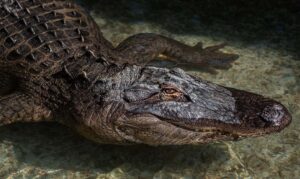
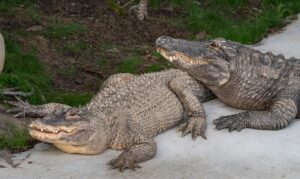
Status
This animal is classified as Least Concern by the International Union for Conservation of Nature (IUCN). The North American alligator was almost hunted to extinction in the first part of the 20th century. Hunters killed them for their skins, which were used to make belts, purses, wallets, and shoes. Today, the United States government protects this alligator, and while they are still being hunted, all hunting is controlled by permit. Once listed as an endangered species, the American alligator populations are now increasing in some areas.
Habitat
The American alligator is found in fresh and slightly salty waters of coastal marshes, swamps, rivers, lakes, and manmade canals in the southeastern U.S., from eastern Texas to the tip of Florida.
Diet
These carnivores eat crabs, crayfish, fish, frogs, snakes, birds, and small mammals such as raccoons, nutria, and muskrats as well as carrion.
Physical Characteristics
Adult males range from 10 to 15 feet long and can weigh 500 to 1,000 pounds. Females are considerably smaller. Alligators may live up to 50 years.
LOCATION WITHIN THE ZOO
You’ll find this animal in the Entry Promenade, across from Reggie’s Cafe. See Zoo Map.

